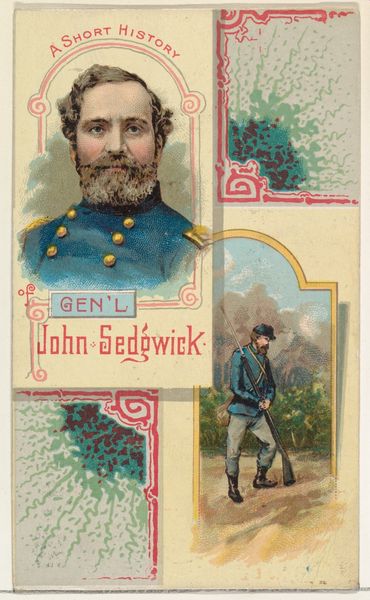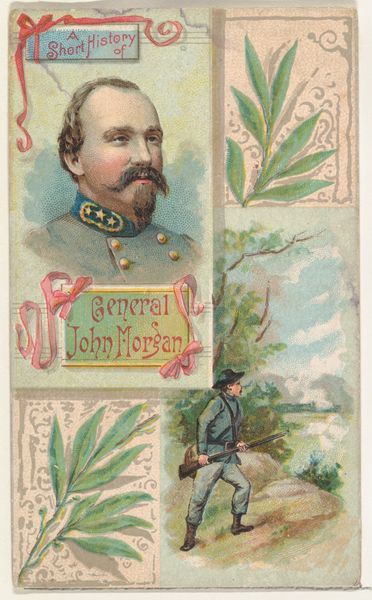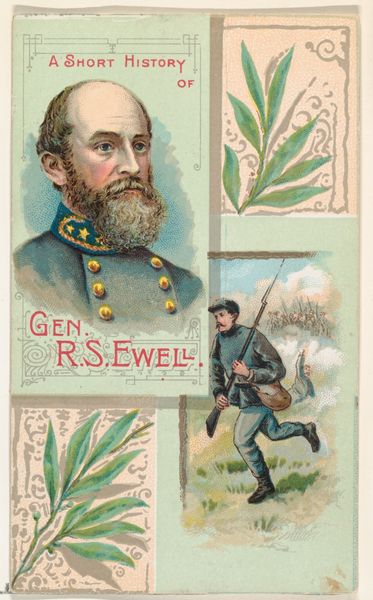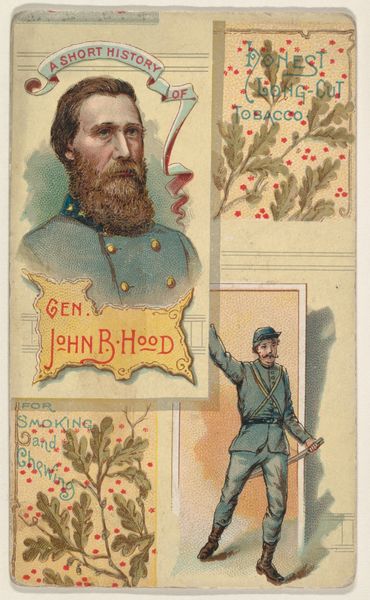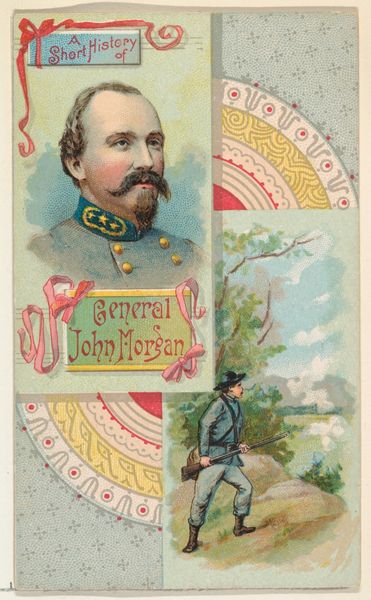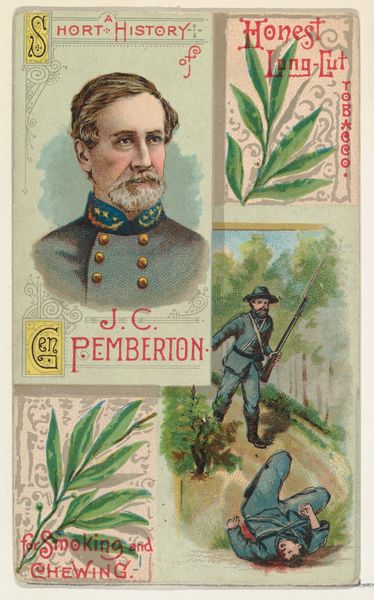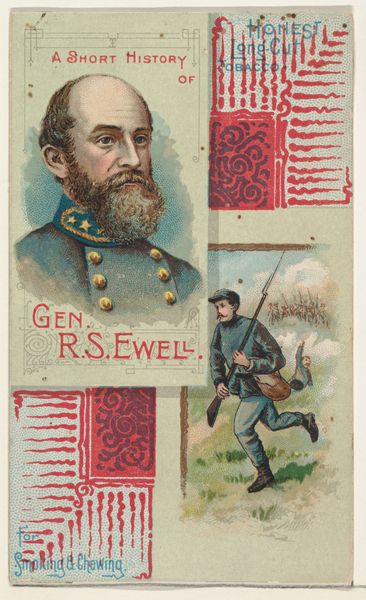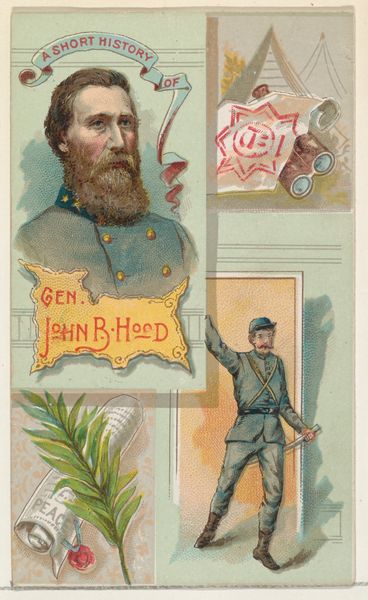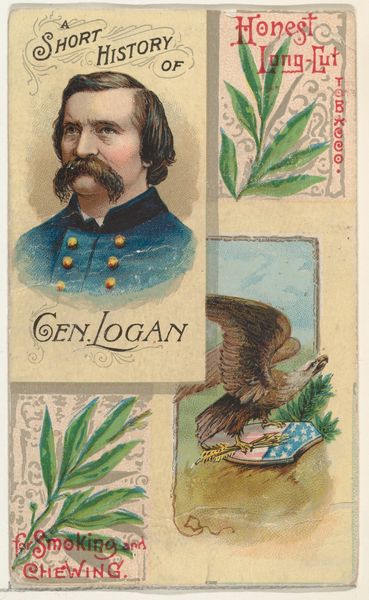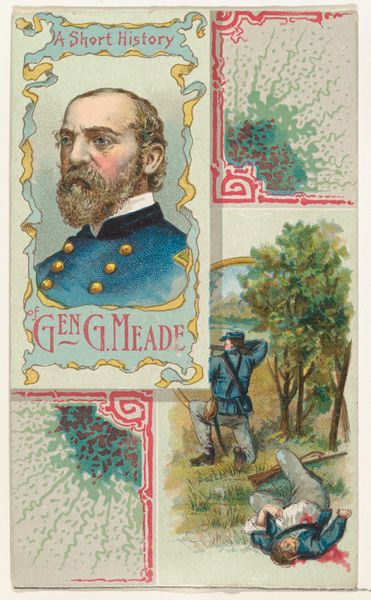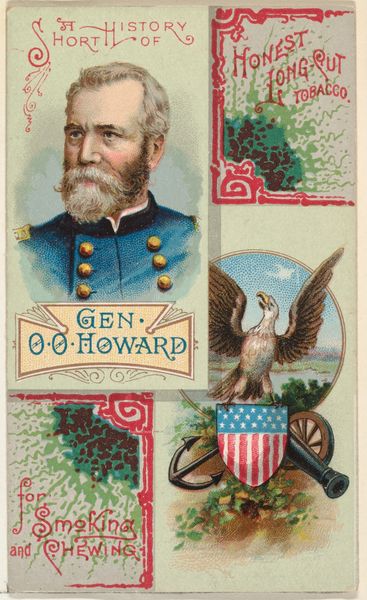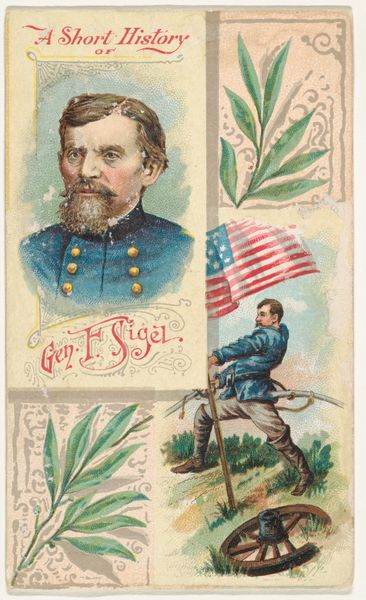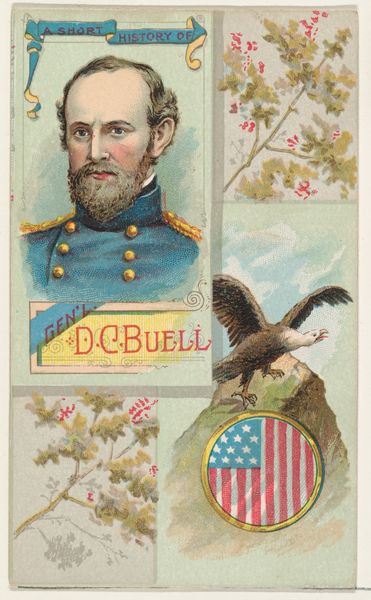
A Short History: General John Sedgwick, from the Histories of Generals series (N114) issued by W. Duke, Sons & Co. to promote Honest Long Cut Smoking and Chewing Tobacco 1888
0:00
0:00
drawing, coloured-pencil, print, paper
#
portrait
#
drawing
#
still-life-photography
#
coloured-pencil
# print
#
paper
#
coloured pencil
Dimensions: Sheet: 4 3/16 × 2 1/2 in. (10.7 × 6.4 cm)
Copyright: Public Domain
Curator: Let’s discuss "A Short History: General John Sedgwick," a piece hailing from the Histories of Generals series issued around 1888 by W. Duke, Sons & Co. These cards were printed to promote their Honest Long Cut Smoking and Chewing Tobacco. What are your immediate impressions? Editor: I'm getting a strangely pastoral vibe for something connected to war and tobacco! It’s the pale green background, perhaps? And those stylized olive branches…it’s almost quaint. There’s a portrait of the General and a figure holding a rifle against a softer backdrop as well, creating a complex image that’s more than just a straightforward historical portrait. Curator: Absolutely. Consider the industrial context. These weren’t meant to be high art, but promotional ephemera, printed on paper using colored pencils and printed processes. The materiality is cheap, easily consumed, and disposable, mirroring the product itself. It blurs the line between commercial imagery and popular portraiture. Editor: So, this delicate aesthetic is basically advertising masquerading as… history? Clever. Though, seeing General Sedgwick like this, sort of defanged and framed by gentle green, it makes me think about how we package heroes. This card feels complicit, normalizing war through pretty visuals, as though Sedgwick is being sold like the tobacco itself. Ironic that olive branches are being deployed here given the context of military history. Curator: It’s precisely that tension between promotion and subject matter that's fascinating. W. Duke, Sons & Co. used the burgeoning print industry to circulate idealized figures of authority and history. The cards offer a glimpse into late 19th-century manufacturing, labor practices, and the circulation of images tied to consumption. Editor: It makes me question how images shape collective memory. What's more powerful: a historical account, or a tobacco card depicting a 'hero?' This little artifact has a sneaky kind of cultural power. Makes one consider the visual landscape we live in today, where similar mechanics are very much at play through platforms and commercial narratives. Curator: Agreed. It is in these humble materials where we unearth how capitalist desires shape identity and legacy, through the industrial means of image-making and promotion. Editor: This image is more than just a portrait of a general or advertisement. I feel it asks us to smoke something, while reflecting on who gets to be a legend, and through what mediums.
Comments
No comments
Be the first to comment and join the conversation on the ultimate creative platform.
